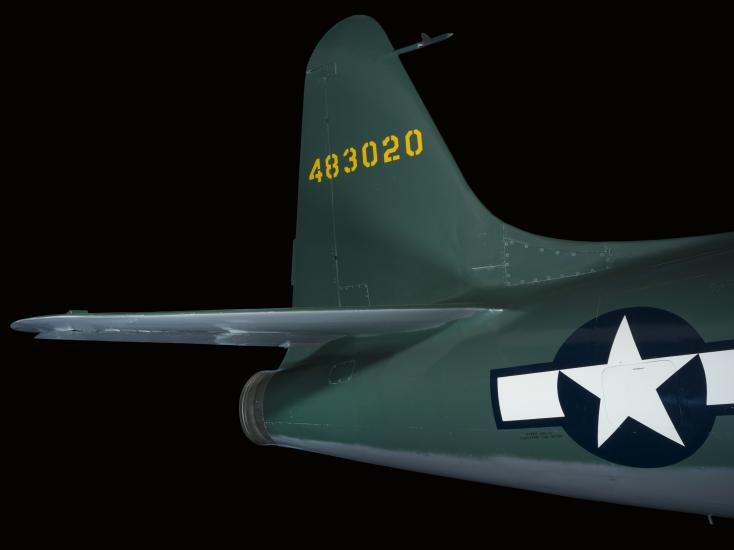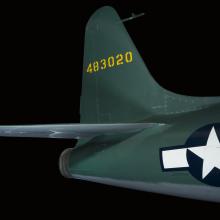Lockheed XP-80 "Lulu Belle" Vertical Stabilizer and Horizontal Stabilizer
-
Lockheed's most capable engineer, Clarence "Kelly" Johnson, and a team of designers began work on a prototype, designated the XP-80 but nicknamed "Lulu-Belle," on June 21, 1943. Lulu-Belle" flew on January 8, 1944, and later starred in a series of exercises conducted to develop tactics that American heavy bomber crews could use against attacks by jet fighters. The trials showed that enemy jet fighter pilots would much prefer rear aspect attacks. Based on these findings, AAF planners moved the formations of American fighters protecting the bombers to higher altitudes. Highlighted in this image are the vertical stabilizer and horizontal stabilizer of the Lockheed XP-80.
Created:
August 04, 2017Photographer:
Mark AvinoID#:
A19600296000-NASM2018-10292Source:
Smithsonian's National Air and Space MuseumOwner:
Smithsonian InstitutionRights Usage:
CC0 (Open Access)Terms of Use:
Smithsonian Terms of UseFor print or commercial use please see permissions information.
Stay up to date on the latest stories and events with our newsletter
National Air and Space Museum
National Air and Space Museum
Steven F. Udvar-Hazy Center
Steven F. Udvar-Hazy Center
Open daily
10:00 am - 5:30 pm

